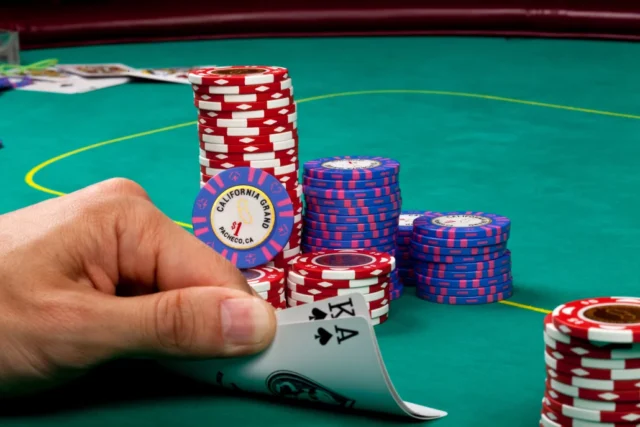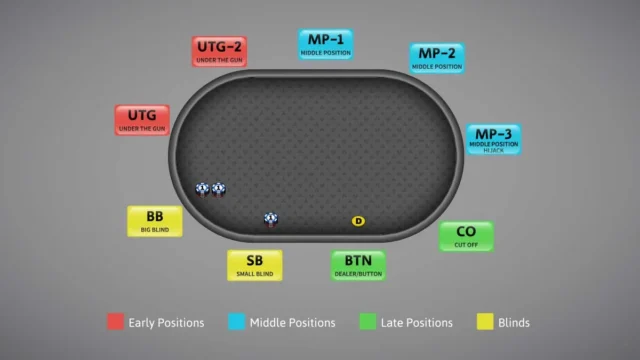
Short-handed poker tables change the game. Every decision carries more weight. Blinds come faster, pressure builds quickly, and passive play gets punished. You’re either adapting, or you’re losing. This guide breaks down what works when the table gets small and the stakes get real.
Key Highlights
- Short-handed poker demands faster, more aggressive decisions.
- Position and initiative matter more with fewer players in the hand.
- Your hand ranges must widen, especially pre-flop.
- Bluffing becomes more valuable, but timing is critical.
- Table image shifts fast and must be managed carefully.
- Solid online platforms allow players to sharpen short-handed strategy in real games.
Why Short-Handed Poker Feels So Different
Six players at the table instead of nine? That changes everything. The action never stops. You’re playing more hands, facing more pressure, and adjusting constantly.
Each orbit forces you to post blinds more often. Waiting for premium hands is not an option. You can’t sit back and hope others bust. If you play scared, you bleed chips fast.
You’ll need to increase your aggression. That doesn’t mean going wild with garbage hands. It means picking the right spots to raise, steal blinds, and isolate weak players. And it means recognizing when your opponents are doing the same to you.
One of the fastest ways to gain real short-handed experience is by joining an active online casino. Platforms like Royal x Casino offer real poker games where short-handed tables are common. You’ll encounter dynamic opponents, sharp shifts in momentum, and pressure-packed decisions. That’s the best training ground for real profit.
Adjusting Your Pre-Flop Range
Pre-flop ranges are everything in short-handed games. If you stick to full-ring standards, you’ll get run over.
What Changes?
You must open more hands from every position. That means suited connectors, weaker aces, and medium pocket pairs become playable from early positions.
You’ll raise with hands you used to fold. You’ll 3-bet light more often. And you’ll defend your blinds aggressively. Because if you don’t, the other players will notice—and punish you for it.
Be selective, but not tight. Tight play becomes predictable. Predictable play becomes beatable.
The Power of Position

Position always matters in poker. In short-handed games, it dominates.
When fewer players act behind you, your position gives you more control. You’ll play more hands on the button and cut-off. You’ll raise wider, isolate weaker opponents, and steal blinds at a higher frequency.
But position is more than just a chance to act last. It’s a signal to apply pressure. If you’re not raising more often in late position, you’re wasting the biggest weapon short-handed poker gives you.
Watch your opponents. Who folds to raises? Who defends too often? Who never re-raises? Adjust your range and target them accordingly.
Playing the Blinds Correctly
Your blinds are under constant attack. That’s not paranoia—it’s math.
Short-handed games rotate fast. You’ll be in the small or big blind every few hands. That means you’re forced to defend more often, but blindly calling every raise will crush your stack.
You need a plan:
- Defend wide, but smart. Suited cards, high card strength, and position post-flop matter more.
- 3-bet weak raisers. Don’t let players steal freely. Mix in aggressive plays.
- Fold marginal hands early. Don’t get dragged into pots you can’t win.
Being in the blind doesn’t mean giving up control. But it means every mistake costs more. Be sharp.
Bluffing in Short-Handed Play

Bluffing works better with fewer players at the table. But it must be timed and targeted.
When to Bluff
- The board favors your range (e.g., high cards after a pre-flop raise).
- Your opponent shows weakness (check-calls and then checks again).
- You’re in position with fold equity.
Bluffs should look like value bets. Use consistent bet sizing. Don’t overuse the check-raise or min-raise. Make your opponent uncomfortable, not confused.
And don’t forget one rule: If your bluffs get called too often, you’re doing it wrong.
Table Image in Small Games
At a short-handed table, your image shifts fast. You can go from tight grinder to wild maniac in one orbit.
Use that to your advantage. Set traps. Adjust gears. Let your opponents misread you.
If they think you’re loose, tighten up and let them overcommit. If they think you’re tight, steal more often. But always stay ahead of their assumptions.
And avoid going on autopilot. Smart opponents in short-handed games pay attention. You must too.
Post-Flop Strategy That Works
Once the flop hits, your decisions must reflect the dynamics of short-handed poker.
You’ll see more flops with marginal hands. That means top pair is often strong. You won’t be folding ace-high flops as quickly. Medium pairs gain value. And draws become powerful weapons—especially when you combine them with fold equity.
Think in layers:
- What hands would they raise with?
- Does the flop hit your range more or theirs?
- If you check, what will they do?
- If you bet, how does your story make sense?
Short-handed post-flop play requires clarity. You can’t bet blindly. Every action should create pressure or extract value.
Handling Tilt and Emotional Pressure
Short-handed play can break your rhythm. You’re involved more often. You’ll win and lose more hands per hour. That leads to emotional swings.
Professional players don’t avoid tilt—they manage it.
If a bluff fails, reset. If a cooler hits, don’t chase revenge. Recognize the emotional shift before it affects your decisions.
One way to handle this? Track your hands. Review key spots. Identify leaks. Growth happens through analysis, not emotion.
Real Game Reps Matter More Than Theory
No book or video replaces live pressure. Playing real hands in high-pace, short-handed games is the only way to refine these skills.
That’s why online platforms matter. They offer live poker with flexible table sizes, sharp opponents, and real decisions. Every session teaches. Every mistake costs. That’s how serious players grow.
Make every hand count. Take notes. Record sessions. Review big spots. Short-handed games demand rapid development, and there’s no better training ground than real play.
Conclusion
Short-handed poker isn’t a casual variant—it’s the proving ground for serious players. It pushes every part of your game. Weakness gets exposed. Inaction gets punished. Adaptation wins.
You must act faster. Think deeper. Play wider. Pressure matters more. Position becomes a weapon. And bluffing turns into profit.
Whether you’re learning through live rooms or refining your edge on a sharp online platforms, short-handed success always follows the same path: better decisions, made faster, with less fear.
Master short-handed play. Own every orbit. Win with fewer players.







